In Roma, TX, the Funny Farm is the pride of R.T. Barrera Elementary. Spearheaded by physical education teacher Mr. Rolando Munoz, the Funny Farm has expanded from a small garden to a 105 by 150 sq ft “farm”. The Eagle’s Orchard is the newest addition to R.T. Barrera’s Funny Farm.
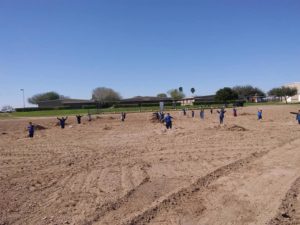 The orchard was established in January 2020 as part of a Starr County Farm to School initiative with the Working on Wellness Environments program and the Farm to School program. Partners such as Roma ISD, the students and staff at R.T. Barrera Elementary, Texas A&M Agrilife Extension, and the local community have helped sustain and move the orchard forward. The orchard includes 43 trees with 8 varieties of grapes, peaches, pineapple oranges, mandarins, limes, figs, grapefruits, and guava trees. Everyone at the school has a role, from food service staff to principals, and down to the students.
The orchard was established in January 2020 as part of a Starr County Farm to School initiative with the Working on Wellness Environments program and the Farm to School program. Partners such as Roma ISD, the students and staff at R.T. Barrera Elementary, Texas A&M Agrilife Extension, and the local community have helped sustain and move the orchard forward. The orchard includes 43 trees with 8 varieties of grapes, peaches, pineapple oranges, mandarins, limes, figs, grapefruits, and guava trees. Everyone at the school has a role, from food service staff to principals, and down to the students.
The Funny Farm began 9 years ago as a small school garden with just a few plants. The same practice of involving staff, parents, and students has been held to this day. The school attributes this, and constant support from administration as a way the garden has been sustained throughout the years.
Students are especially involved in the farm. They make sure the animals are well taken care of, feed them using measuring cups to make sure they get the right amount of food, harvest produce like lettuce and cucumbers, and make sure that produce goes back to the cafeteria. Additionally, students are allowed to take some of the produce home, where they can prepare a meal and bring it back for show and tell.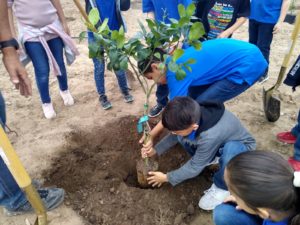
Through the farm, students learn agricultural and nutritional practices and introduces them to new fruits and vegetables. Trees in the orchard are watered through a drip irrigation system, and the amount of water depends on the season. The school allows visitors to visit the Funny Farm, where they can learn sustainability practices.
Volunteer involvement has been immense from planting trees to digging holes to pulling weeds. Surplus fruit will be sold at festivals, farmer’s markets, and ag clubs in order to ensure longevity. The farm is looking to adapt an adopt-a-tree program to help sustain the the orchard for many years to come.
With COVID-19- the “farm” has seen its challenges. With students not physically in school, garden maintenance has been done through school administrators themselves. The next phase for the farm is to add pollinator garden beds, and a high tunnel which have all been approved. The farm has also recently been awarded an NRCS grant to help cover costs. The main goal of this project is for Roma ISD to expand to other schools in the district. For more information, check out the video below!
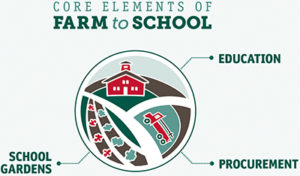
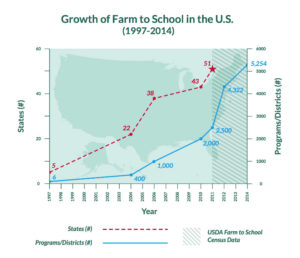 Farm to school implementation differs by location but always includes one or more of the following:
Farm to school implementation differs by location but always includes one or more of the following: The COVID-19 pandemic has forced many of us to work differently. Whether it’s taking on a new or additional job or household responsibilities, quarantining at home or wearing facial masks and protective gear, we’ve all had to adapt to these unprecedented times. This also includes adapting our outreach for WOW-E and working with many groups to meet online.
The COVID-19 pandemic has forced many of us to work differently. Whether it’s taking on a new or additional job or household responsibilities, quarantining at home or wearing facial masks and protective gear, we’ve all had to adapt to these unprecedented times. This also includes adapting our outreach for WOW-E and working with many groups to meet online. the importance of heart health and the need for more research, with a reminder to get everyone involved. Cardiovascular disease (heart disease and stroke combined) kills about 2,300 a day. Obesity in both youth and adults is at an all-time high. The American Heart Association wants you to consider these facts:
the importance of heart health and the need for more research, with a reminder to get everyone involved. Cardiovascular disease (heart disease and stroke combined) kills about 2,300 a day. Obesity in both youth and adults is at an all-time high. The American Heart Association wants you to consider these facts: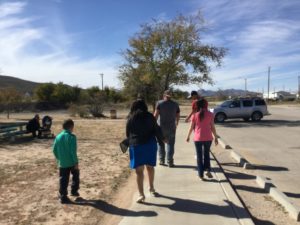 creation of local food systems, and working with local communities to create walkable downtowns and connecting safe, accessible areas to everyday destinations.
creation of local food systems, and working with local communities to create walkable downtowns and connecting safe, accessible areas to everyday destinations. From Dr. Jenna Anding
From Dr. Jenna Anding